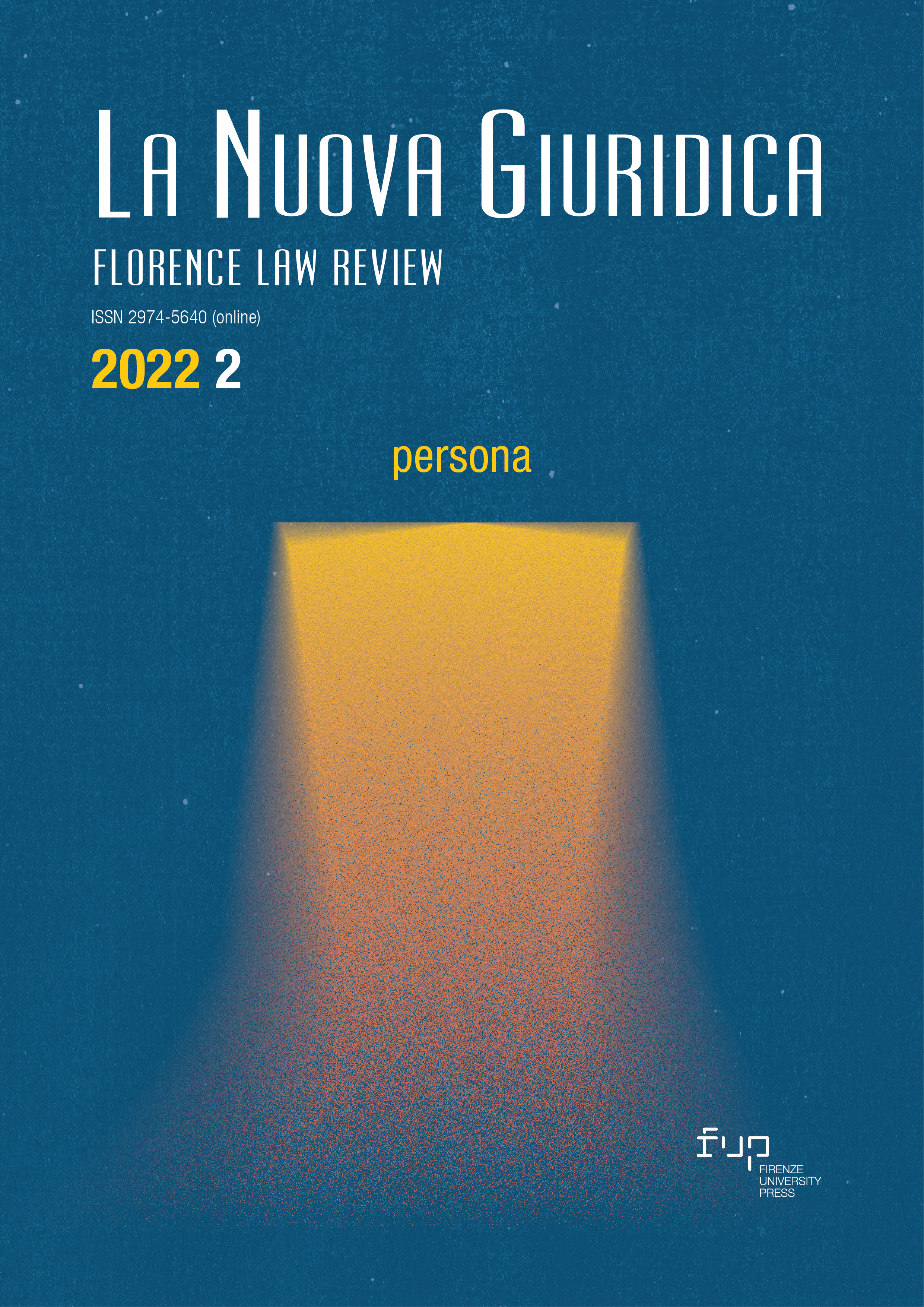Published 2023-01-19
Keywords
- divorzio,
- coniuge debole,
- diritto romano
Copyright (c) 2023 Francesca Rossi

This work is licensed under a Creative Commons Attribution 4.0 International License.
Abstract
Il presente contributo propone una breve rifl essione sulla tutela del coniuge “debole” nel diritto romano, alla luce degli strumenti previsti a favore della donna a seguito dello scioglimento del matrimonio. A tal fi ne, sono presi in esame gli istituti della dote e della donazione nuziale (ante e propter nuptias), quali apporti patrimoniali funzionali alla vita coniugale. In particolare, viene considerato il regime giuridico di entrambi in conseguenza del divorzio, attraverso un riferimento alla restituzione e alle trattenute dotali (retentiones), nonché all’usufrutto legale della donazione nuziale in favore della moglie. Il lavoro si sofferma poi sull’obbligo alimentare nei confronti della prole, come risultante dal senatoconsulto Planciano, relativo al riconoscimento dei fi gli nati post divortium. In ciascuno di tali istituti emerge non soltanto una logica di favor mulieris, ma anche e soprattutto di favor matris, suggerendo la conclusione che si tratti di strumenti volti alla tutela della donna in quanto mater (oltre che moglie), più che della donna in quanto (semplicemente) uxor.
This paper proposes a brief refl ection on the protection of the “weak” spouse in Roman law, in the light of the instruments provided for women following the
dissolution of marriage. To this end, the institutes of dowry and nuptial donation (ante and propter nuptias) are examined, as capital contributions functional to married life. In particular, the legal regime of both is considered as a consequence of divorce, through a reference to restitution and dotal withholdings (retentiones), as well as the legal usufruct of the nuptial gift in favour of the wife. The work then dwells on the alimony obligation towards the offspring, as resulting from the senatus consultum Plancianum on the recognition of children born post divortium. In each of these institutions there emerges not only a logic of favor mulieris, but also and especially of favor matris, suggesting the conclusion that these are instruments aimed at protecting women as mater (as well as wife) rather than women as (simply) uxor.
References
- .

